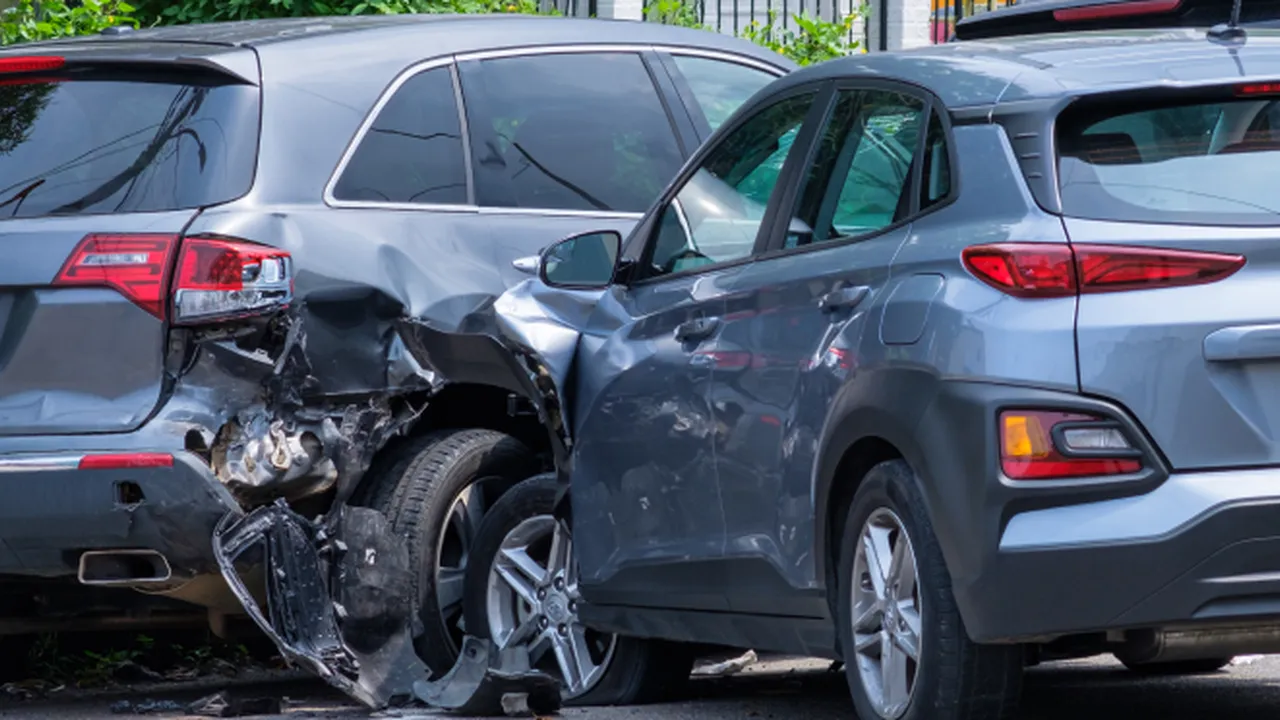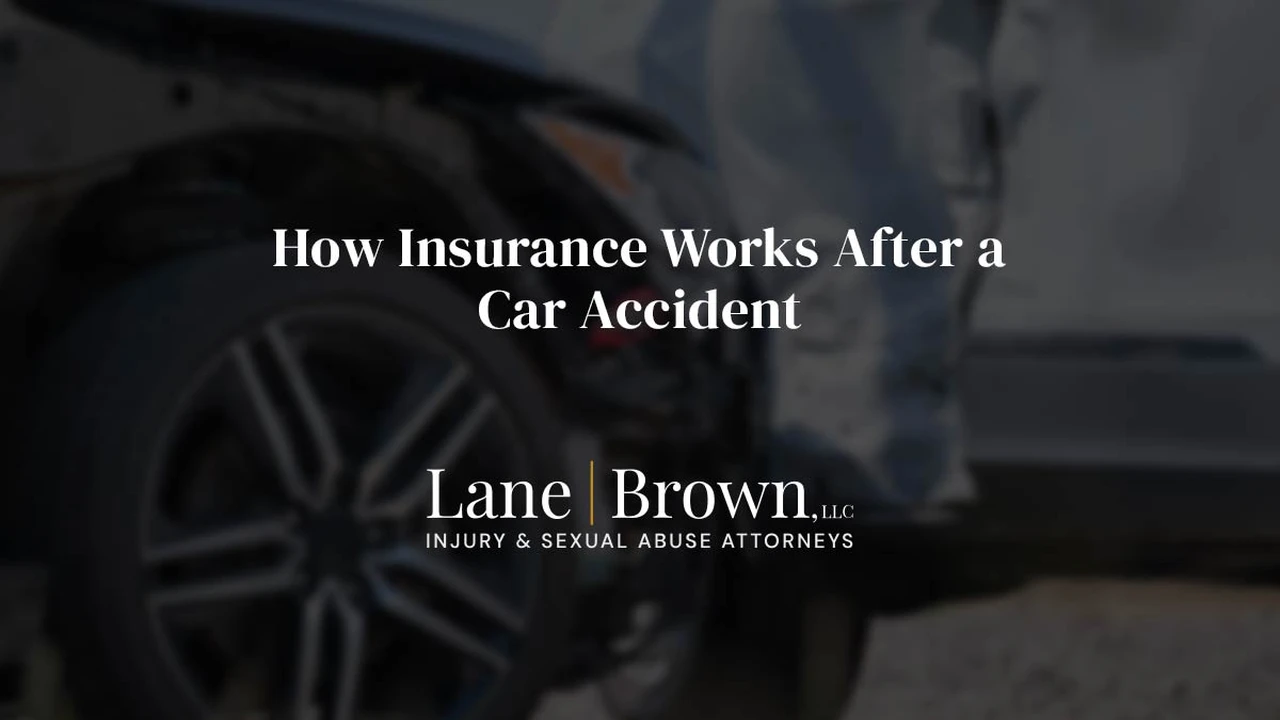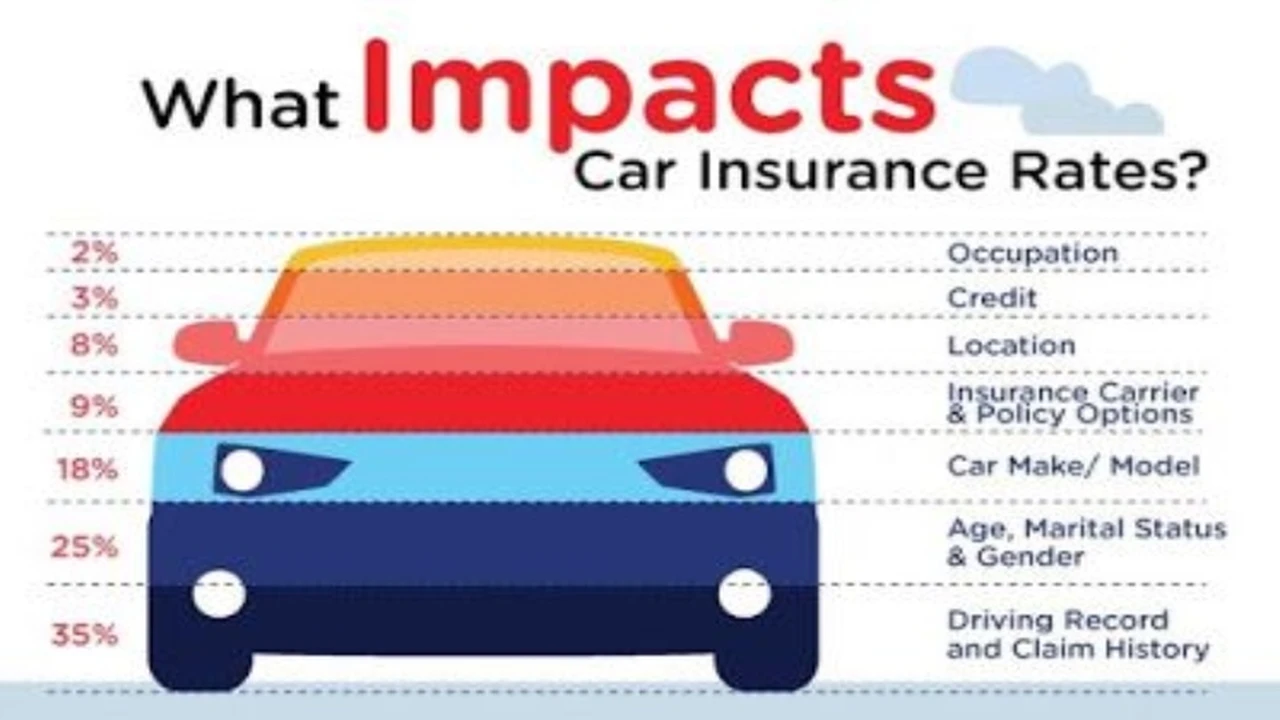Preventing Car Accidents: Safe Driving Tips

Understanding the Risks Common Causes of Car Accidents
Alright, let’s get real. Car accidents happen. Sometimes it's bad luck, but more often than not, it’s preventable. Understanding the common culprits is the first step in staying safe. We're talking distracted driving (that phone can wait!), speeding (leave the race car driving to the pros), drunk driving (seriously, just don't), and aggressive driving (chill out, we'll all get there). Weather also plays a huge role. Rain, snow, fog – they all crank up the risk. And don't forget about vehicle malfunctions. Keep your car in tip-top shape to avoid nasty surprises.
Defensive Driving Techniques Staying Alert and Aware
Defensive driving isn't just a course you take to get points off your license; it's a mindset. It’s about anticipating what other drivers *might* do, not what they *should* do. Keep a safe following distance – the "three-second rule" is a good starting point, but increase it in bad weather. Scan the road ahead, check your mirrors frequently, and be aware of your surroundings. Pay attention to blind spots – a shoulder check can save lives. And never assume other drivers see you. Make eye contact when possible.
Maintaining Your Vehicle Regular Maintenance for Safety
Your car is a complex machine, and it needs regular TLC to stay reliable. That means keeping up with routine maintenance like oil changes, tire rotations, and brake inspections. Check your tire pressure regularly – underinflated tires can reduce fuel efficiency and increase the risk of a blowout. Make sure your lights are working properly, and replace worn-out wiper blades. And don't ignore warning lights on your dashboard. They're trying to tell you something!
Safe Driving in Various Weather Conditions Adapting to Different Environments
Driving in bad weather requires a different set of skills. In rain, reduce your speed and increase your following distance. Turn on your headlights, and use your windshield wipers to maintain visibility. If you start to hydroplane, ease off the gas and gently steer in the direction you want to go. In snow and ice, drive even slower and avoid sudden movements. Use snow tires or chains for added traction. And in fog, use your low beams (high beams will only reflect back at you) and drive cautiously. If visibility is severely limited, pull over to a safe location and wait for the fog to clear.
Combating Distracted Driving Staying Focused on the Road
Distracted driving is a major problem, and it's not just about texting. Anything that takes your attention away from the road is a distraction. That includes talking on the phone, eating, adjusting the radio, and even daydreaming. Put your phone away (or use a hands-free device), eat before you drive, and set your GPS before you start your trip. If you need to do something that requires your attention, pull over to a safe location. Your life is worth more than a text message.
The Importance of Proper Rest Avoiding Drowsy Driving
Drowsy driving is just as dangerous as drunk driving. When you're tired, your reaction time slows down, your judgment is impaired, and you're more likely to make mistakes. Get enough sleep before you drive, especially on long trips. If you start to feel tired, pull over to a safe location and take a nap. Drink caffeine or listen to upbeat music to help you stay awake. And avoid driving during your peak sleep times (usually between midnight and 6 a.m.).
Understanding Traffic Laws and Regulations Obeying the Rules of the Road
Traffic laws are there for a reason: to keep everyone safe. Know the rules of the road in your area, and obey them. That includes speed limits, traffic signals, and right-of-way laws. Pay attention to road signs and markings, and be aware of changing traffic patterns. And never drive under the influence of drugs or alcohol.
Using Technology to Enhance Safety Driver-Assistance Systems and Apps
Modern cars are equipped with a variety of safety features that can help prevent accidents. These include anti-lock brakes (ABS), electronic stability control (ESC), and traction control. Some cars also have advanced driver-assistance systems (ADAS) such as lane departure warning, blind spot monitoring, and automatic emergency braking. Familiarize yourself with the safety features in your car, and use them properly. There are also a number of apps that can help you stay safe on the road, such as navigation apps that provide real-time traffic updates and apps that can help you monitor your driving behavior.
Choosing the Right Car for Safety Features to Consider
When you're buying a new car, safety should be a top priority. Look for cars with good crash test ratings from organizations like the Insurance Institute for Highway Safety (IIHS) and the National Highway Traffic Safety Administration (NHTSA). Consider cars with advanced safety features such as automatic emergency braking, lane departure warning, and blind spot monitoring. And don't forget about basic safety features like airbags and seatbelts.
The Role of Car Insurance Protecting Yourself Financially
Car insurance is essential for protecting yourself financially in the event of an accident. Make sure you have adequate coverage to pay for damages to your car and injuries to yourself and others. Consider purchasing uninsured/underinsured motorist coverage to protect yourself if you're hit by a driver who doesn't have insurance or doesn't have enough insurance. And shop around for the best rates to save money on your premiums.
Child Passenger Safety Protecting Your Youngest Passengers
If you have children, it's crucial to use the right car seat for their age and size. Follow the manufacturer's instructions for installing and using the car seat properly. Never put a child in the front seat if there's an active airbag. And make sure children are properly restrained in the car at all times.
Sharing the Road Safely Being Mindful of Other Road Users
Remember that you're not the only one on the road. Be mindful of other road users, including pedestrians, cyclists, and motorcyclists. Give them plenty of space, and be prepared to yield the right-of-way. Watch out for pedestrians crossing the street, especially in crosswalks. And be extra careful when driving near schools and playgrounds.
Dealing with Road Rage Staying Calm and Avoiding Confrontation
Road rage is a serious problem that can lead to accidents and even violence. If you encounter an aggressive driver, don't engage. Avoid eye contact, and don't make any gestures. Let them pass you, and if you feel threatened, pull over to a safe location and call the police. And don't let your own emotions get the best of you. Take deep breaths, and remind yourself that it's not worth getting into a confrontation.
Emergency Preparedness What to Do After an Accident
Even with the best precautions, accidents can still happen. If you're involved in an accident, stay calm and assess the situation. Check for injuries, and call 911 if necessary. Exchange information with the other driver, including names, addresses, insurance information, and license plate numbers. Take photos of the damage to both vehicles. And report the accident to your insurance company.
Advanced Driving Courses Enhancing Your Skills and Knowledge
Consider taking an advanced driving course to improve your skills and knowledge. These courses can teach you advanced techniques for handling your car in different situations, such as skid control and emergency braking. They can also help you become a more confident and skilled driver.
The Impact of Technology on Vehicle Safety The Future of Safe Driving
Technology is rapidly changing the way we drive, and it has the potential to make our roads much safer. Self-driving cars are becoming a reality, and they promise to eliminate many of the human errors that cause accidents. Advanced driver-assistance systems are also becoming more sophisticated, and they can help drivers avoid accidents in a variety of situations. As technology continues to evolve, we can expect to see even more innovations that will make our roads safer.
Understanding Car Insurance Claims How to Navigate the Process
Filing a car insurance claim can be a complex process, but it's important to understand your rights and responsibilities. Contact your insurance company as soon as possible after an accident. Provide them with all the necessary information, including the date, time, and location of the accident, as well as the names and contact information of the other driver and any witnesses. Cooperate with the insurance company's investigation, and provide them with any documents they request. If you're not satisfied with the insurance company's offer, you have the right to appeal their decision.
Specific Product Recommendations for Enhanced Safety
Let's dive into some specific products that can boost your safety on the road. These aren't just random gadgets; they're tools designed to make you a better, more aware driver.
Dash Cams Your Witness on the Road
A dash cam is a small camera that mounts to your windshield and records everything that happens in front of your car. It can be invaluable in the event of an accident, providing evidence to support your claim. Think of it as your silent witness. Use Case: Imagine you're at a four-way stop, and another driver runs the stop sign, hitting your car. Without a dash cam, it might be your word against theirs. But with a dash cam recording, you have clear evidence of what happened. Product Comparison: * Vantrue N4 Pro: This is a high-end dash cam with three cameras (front, interior, and rear), 4K resolution, and excellent night vision. It's pricier, around $300-$350, but worth it for the added security. * Garmin Dash Cam Mini 2: A compact and discreet option that records in 1080p. It's easy to install and use, and it offers cloud storage. It costs around $130-$150. * Rexing V1: A budget-friendly option that still offers good quality video. It records in 1080p and has a wide-angle lens. It costs around $70-$90. Why choose one over the other? If you want the best possible video quality and don't mind spending the extra money, the Vantrue N4 Pro is the way to go. If you're looking for a compact and affordable option, the Garmin Dash Cam Mini 2 is a great choice. And if you're on a tight budget, the Rexing V1 is a good compromise.
Blind Spot Mirrors Eliminating the Danger Zones
Blind spot mirrors are small, convex mirrors that attach to your side mirrors. They provide a wider field of view, allowing you to see cars that are in your blind spots. Use Case: You're changing lanes on the highway, and you check your mirrors. You don't see anything, so you start to move over. But suddenly, you hear a horn and realize there was a car in your blind spot. Blind spot mirrors can help you avoid this situation. Product Comparison: * Ampper Blind Spot Mirrors: These are small, adjustable mirrors that attach to your side mirrors with adhesive. They're affordable and easy to install. A pair costs around $10-$15. * Fit System C4100 Clip-On Towing Mirror: While designed for towing, these clip-on mirrors provide a much wider view than standard mirrors and can be helpful for eliminating blind spots, especially for larger vehicles. They're more expensive, around $50-$70 per pair. * Custom-Fit Mirrors with Integrated Blind Spot Mirrors: Some vehicles offer replacement side mirrors with integrated blind spot mirrors. These provide a seamless look and often include other features like heated mirrors and turn signals. These are the most expensive option, often costing $100-$300 per mirror. Why choose one over the other? Ampper blind spot mirrors are a simple and affordable way to improve your visibility. The Fit System mirrors are good for larger vehicles or those who frequently tow. Custom-fit mirrors offer the best integration but are the most expensive.
Tire Pressure Monitoring Systems (TPMS) Keeping Your Tires in Check
A TPMS monitors the air pressure in your tires and alerts you if it drops below a certain level. Underinflated tires can reduce fuel efficiency, increase the risk of a blowout, and affect handling. Use Case: You're driving on the highway, and suddenly you feel a vibration in your car. You pull over and discover that one of your tires is significantly underinflated. A TPMS would have alerted you to the problem before it became a safety hazard. Product Comparison: * FOBO Tire 2: An external TPMS that screws onto your tire valves and transmits data to your smartphone via Bluetooth. It's easy to install and use, and it provides real-time tire pressure and temperature readings. A set of four costs around $200-$250. * EEZTire TPMS: Another external TPMS with a dedicated display unit. It's a bit more expensive than the FOBO Tire 2, but it offers a larger display and more advanced features. A set of four costs around $250-$300. * Internal TPMS Sensors: Many newer vehicles come with internal TPMS sensors installed in the wheels. If your car doesn't have them, you can have them installed by a mechanic. The cost varies depending on the car and the sensors, but it's typically around $50-$100 per sensor plus labor. Why choose one over the other? External TPMS systems are easy to install and can be used on any car. Internal TPMS sensors are more integrated but require professional installation. If your car already has internal TPMS sensors, make sure they're working properly.
Portable Breathalyzers Ensuring You're Fit to Drive
A portable breathalyzer allows you to quickly and easily check your blood alcohol content (BAC) before you drive. It's a responsible way to make sure you're not over the legal limit. Use Case: You've been out for dinner and had a couple of drinks. You're not sure if you're over the legal limit to drive, so you use a portable breathalyzer to check. If your BAC is too high, you can call a taxi or ride-sharing service instead of driving. Product Comparison: * BACtrack S80 Pro: A professional-grade breathalyzer that uses a fuel cell sensor for accurate readings. It's easy to use and provides results in seconds. It costs around $150-$200. * AlcoMate Revo TS200: Another fuel cell breathalyzer that's known for its accuracy and reliability. It has a digital display and provides results in seconds. It costs around $100-$150. * BACtrack Go: A keychain breathalyzer that's small and portable. It uses a semiconductor sensor, which is less accurate than a fuel cell sensor, but it's still a good option for a quick check. It costs around $30-$40. Why choose one over the other? Fuel cell breathalyzers are more accurate than semiconductor breathalyzers. If you want the most accurate readings, choose a fuel cell breathalyzer. If you're looking for a small and portable option, the BACtrack Go is a good choice.
GPS Navigation Systems Staying on Course Safely
A GPS navigation system provides turn-by-turn directions, helping you stay on course and avoid getting lost. Many GPS systems also offer real-time traffic updates, allowing you to avoid traffic jams. Use Case: You're driving in an unfamiliar city, and you need to get to a specific address. A GPS navigation system can guide you to your destination, even if you don't know the way. Product Comparison: * Garmin DriveSmart 66: A GPS navigation system with a 6-inch display, real-time traffic updates, and voice control. It's easy to use and offers a variety of features. It costs around $200-$250. * TomTom GO 6200: Another GPS navigation system with a 6-inch display, real-time traffic updates, and Wi-Fi connectivity. It also offers lifetime map updates. It costs around $250-$300. * Smartphone Navigation Apps: Apps like Google Maps and Waze offer free navigation with real-time traffic updates. They're convenient and easy to use, but they can drain your phone's battery. Why choose one over the other? Dedicated GPS navigation systems offer a larger display and more features than smartphone apps. However, smartphone apps are free and convenient. Choose the option that best suits your needs.
Emergency Roadside Kits Being Prepared for the Unexpected
An emergency roadside kit contains essential items that can help you deal with a breakdown or other emergency on the road. Use Case: You're driving on a deserted road, and your car breaks down. You don't have a cell phone signal, and there's no one around to help. An emergency roadside kit can provide you with the tools and supplies you need to stay safe and get your car back on the road. What to include in your kit: * Jumper cables * A flashlight with extra batteries * A first-aid kit * A tire repair kit * A warning triangle or flares * A blanket * Water and snacks * A multi-tool * A whistle You can purchase pre-made emergency roadside kits, or you can assemble your own. A good pre-made kit will cost around $50-$100.
Investing in these products can significantly improve your safety on the road. Remember, safe driving is a combination of skill, awareness, and preparation. By taking steps to protect yourself, you can reduce your risk of being involved in an accident.
:max_bytes(150000):strip_icc()/277019-baked-pork-chops-with-cream-of-mushroom-soup-DDMFS-beauty-4x3-BG-7505-5762b731cf30447d9cbbbbbf387beafa.jpg)






